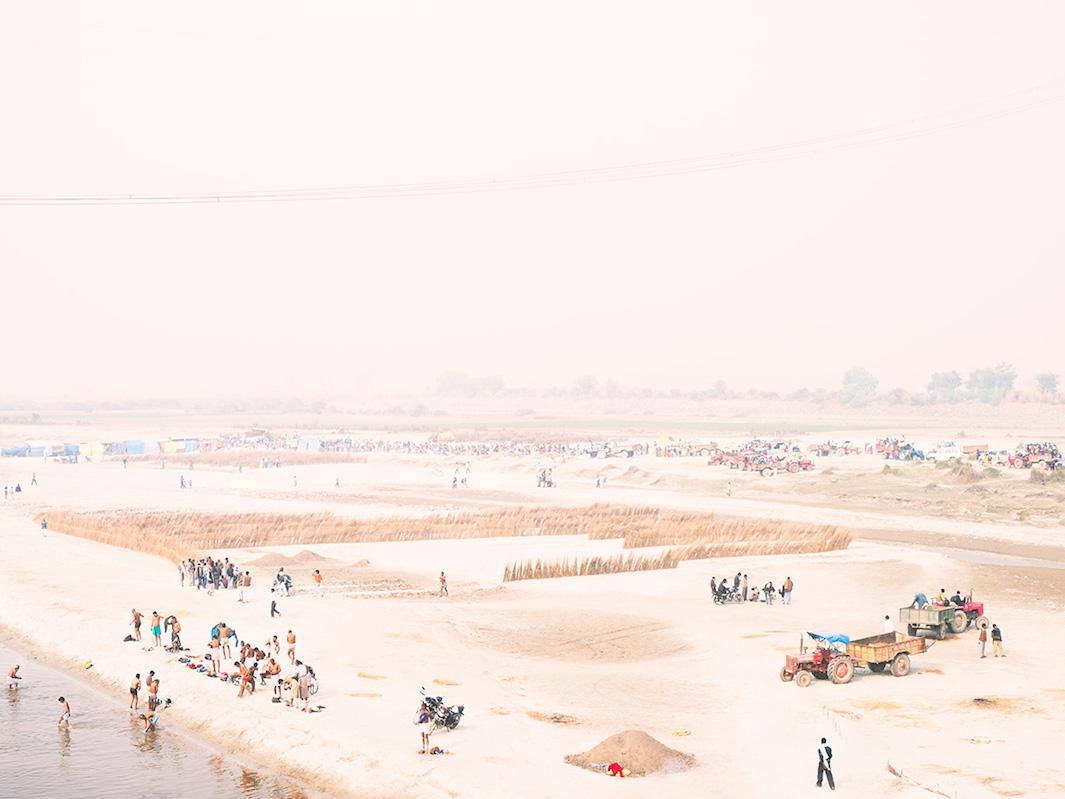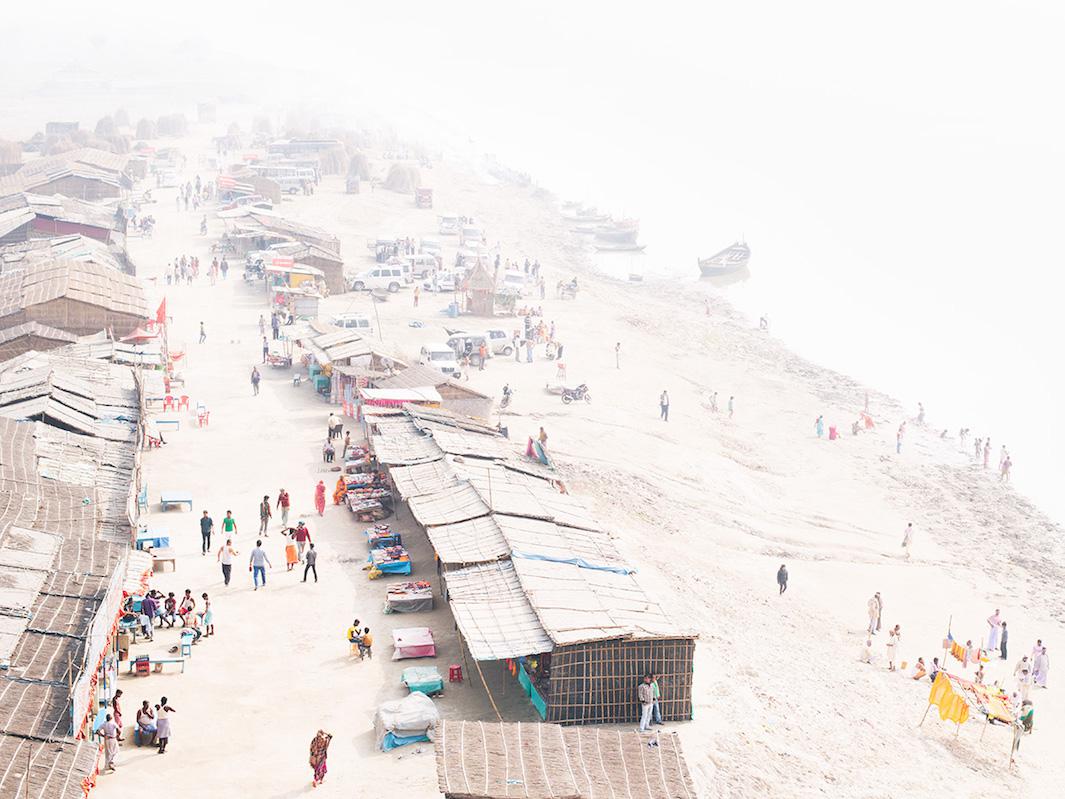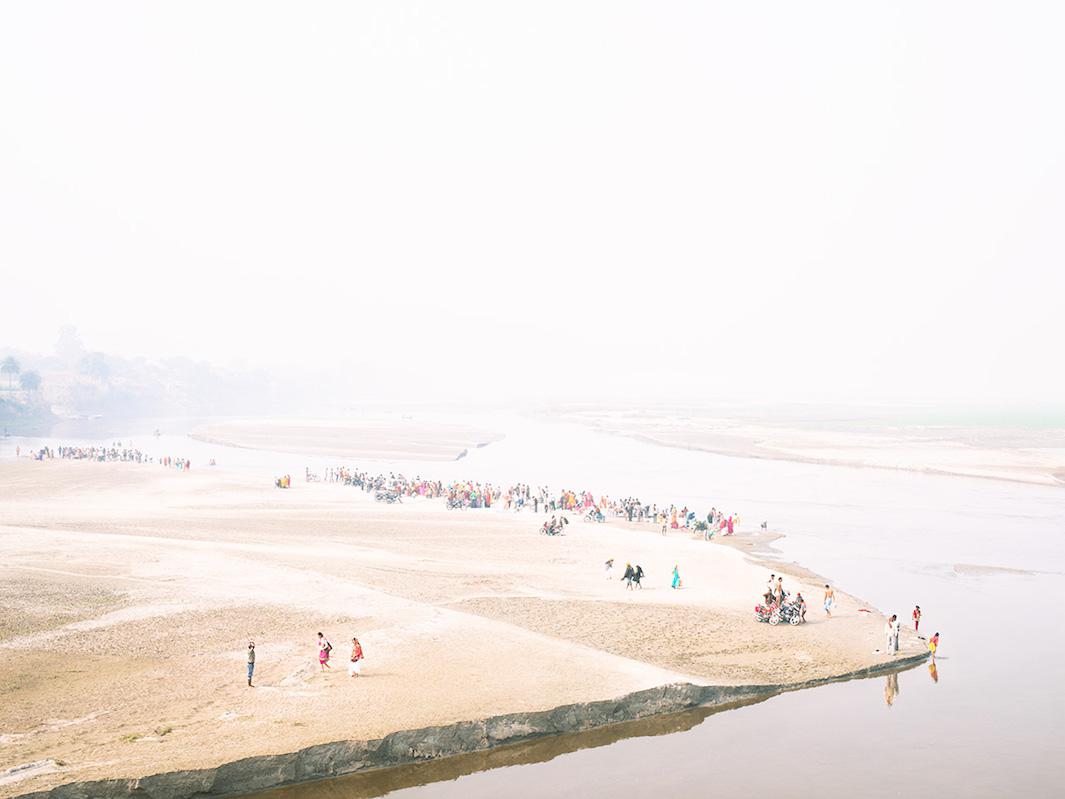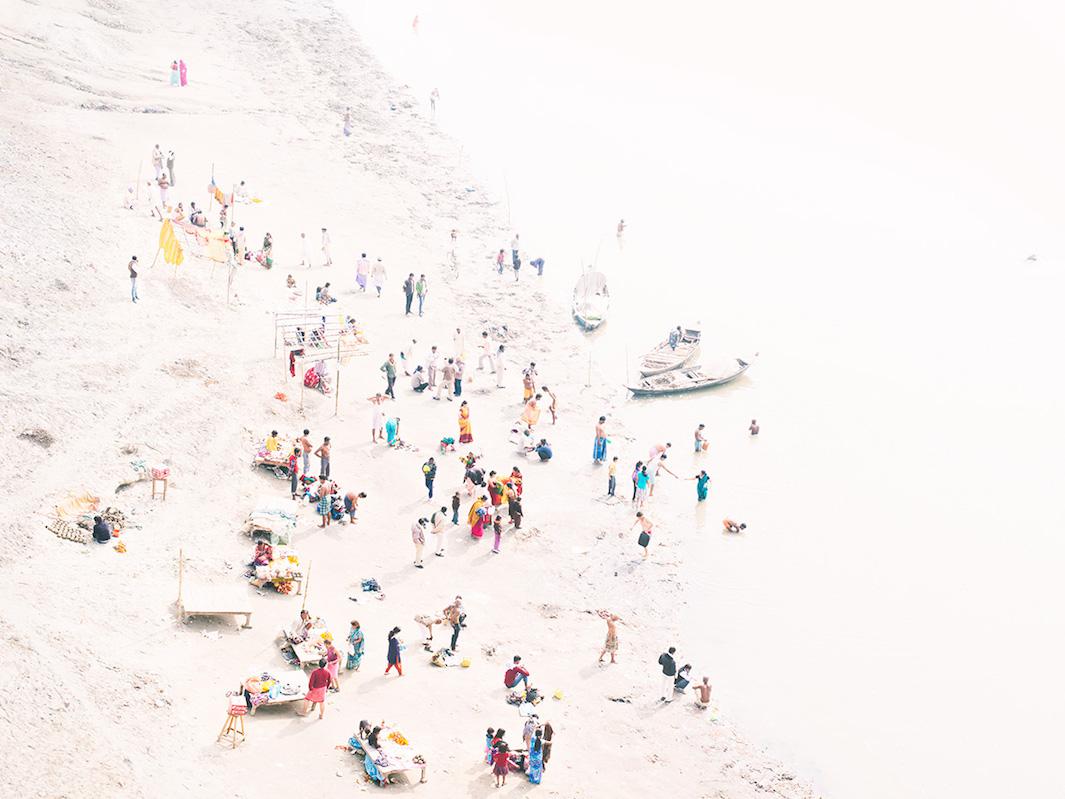Caleb Cain Marcus grew up hearing his parents’ stories about India. When he went there for the first time as a boy, he felt that the country was “soaked in spirituality and myth.”
“Anything was possible no matter how fantastic,” Cain Marcus said via email.
Marcus captures that sense of wonder and enchantment in Goddess, which was published by Damiani last month. In 2013, he covered 1,500 miles along the country’s sacred and life-sustaining river, the Ganges, starting from Gangotri in the Himalayas and ending up at the Bay of Bengal. His photos show the landscape he traversed over the course of 44 days by boat, car, and foot. Typically shooting from a broad, distant perspective through thick fog or brilliant light, brightly clothed people and colorful environments are just faintly visible in Cain Marcus’ photos. That’s intentional: Cain Marcus says Goddess is as much about the space between things as the things themselves.
“I’ve been intrigued by space since my first book. Like air, space surrounds us. It fills what we often think of as the void between physical things. Space isn’t something empty—it has a physical presence, a weight, a density. It’s as material as the trees and rivers,” he said.

Caleb Cain Marcus

Caleb Cain Marcus

Caleb Cain Marcus

Caleb Cain Marcus
As Cain Marcus traveled along the river, the photos he made captured changes in the built and natural environment. After Haridwar, he saw the river leave the foothills of the Himalayas and enter the plains. From there, Cain Marcus photographed the increasing presence of agriculture and industry. Approaching the Indus-Ganga Plain, he explored more subtle changes in the landscape until the river emptied into the sea. For Cain Marcus, seeing the entire length of the Ganges was a rare and enlightening experience that changed the way he pictured the river in his mind.
“When the river is seen in pieces there is no sense of the whole—the place Varanasi and the river Ganga become inseparable. Now I see the river as something separate from the holy cities and the land—as though there is this strong line floating with a current of air around it, unbound by the Earth and gravity.”

Caleb Cain Marcus

Caleb Cain Marcus

Caleb Cain Marcus

Caleb Cain Marcus
